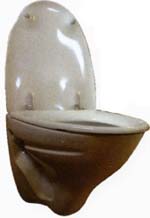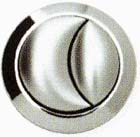Levels of water consumption in the home largely depend on individual habits, but by far the heaviest consumers of household water are toilets, washing machines, bathtubs, and showers. While there is a wide range of simple measures that you can take to ensure more efficient water usage in these and other areas, a more active effort may include water recycling and water treatment methods.
Household Appliances
There are several steps you can take, of varying degrees, to improve the efficiency of household appliances that use water. When buying appliances, choose energy-efficient models and look for items that have been designed to reduce an appliance’s water use. However, taking a look backward, in technological terms, may sometimes prove beneficial. For example, using a conventional mixer shower rather than a pumped power shower may save water and energy, while you might also question the whole issue of flushing toilets. Although the concept of composting toilets may seem prehistoric, over recent years the developments in their design and efficiency have meant that they are increasing in popularity. Although it is unlikely that they will ever come into mainstream use, it is conceivable that composting toilets may become viable alternatives to flushing toilets.
Dual-flush valves: Tanks with dual-flush valves give the option of low- volume flushes. 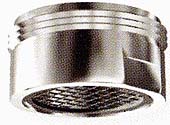 Flow-reducing attachment: For more efficient water provision, faucets may be fitted with a range of flow- reducing attachments. |
Recycling Water
On the most basic level, water recycling methods include collecting rainwater in barrels, then using it to water the garden. However, it is now possible to have much more sophisticated systems installed that use rainwater to supply toilets, outside faucets, and even household appliances.
Gray water is all the water that has been used as washing water in the home, while black water refers to waste water from toilets. Manufacturers now produce systems for treating both gray and black water. These systems remove sediments, then filter and disinfect the water, so that it is reusable for anything except drinking.
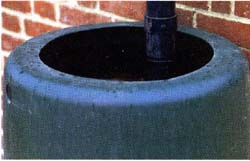
Above: Rain barrel -- Placing rain barrels below gutter
down- spouts is a simple way of saving on water usage in the garden.
Barrels are available in a variety of capacities, and some come with
childproof lids.
Water Treatment
In areas where hard water is a problem, installing a water softener is a wise long-term investment. Hard water scales up all appliances, making them much less efficient and more costly to run. Water softeners do not affect the kitchen cold-water supply or any other drinking-water faucets.
Other water treatment devices include magnetic and electrolytic scale inhibitors that are designed to reduce scale in the system but not soften the water.
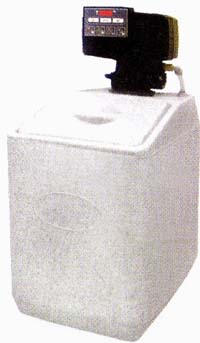
Above:
Water softener -- Domestic water softeners can improve
the efficiency of your home’s water system and any appliances that use
water. Learn more
about Water
Filters, Water Softeners and Water Devices...
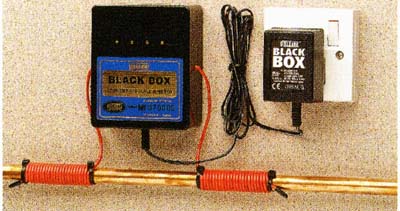
Above: Scale inhibitor -- This device helps prevent scale from appearing
in the water system by passing a series of electric currents around the
mains water pipe.
Saving Water in the Home
The following is a list of simple ways in which you may reduce your household water consumption:
- Leaks in your water system can be a key source of wastage. If you have a water meter, turn off your water and take two readings several minutes apart. If they are different, there may be a leak.
- When buying new appliances that use water, choose those that are energy-efficient to save water and electricity. Look for the Energy Star logo.
- Rain barrels in your garden collect rainwater that may be used on your plants and lawn, saving large volumes of treated water.
- A five-minute shower uses about one-third of the water that a bath does.
- Toilet tanks may use as much as 8 gallons (30 liters) of clean water with every flush. Lower your cistern’s capacity by placing a brick or filled bag in the cistern.
- Dripping faucets waste huge volumes of water. Make sure that you regularly replace worn washers.
- Burst water pipes are a major cause of damage as well as water wastage, so ensure that your water pipes and external faucets are well insulated.
- Try not to leave the water running while you brush your teeth, shave, or wash your hands, as this can waste up to 1.1 gallons (5 liters) of water per minute.
- Use a bucket of water instead of the garden hose when you wash your car.
